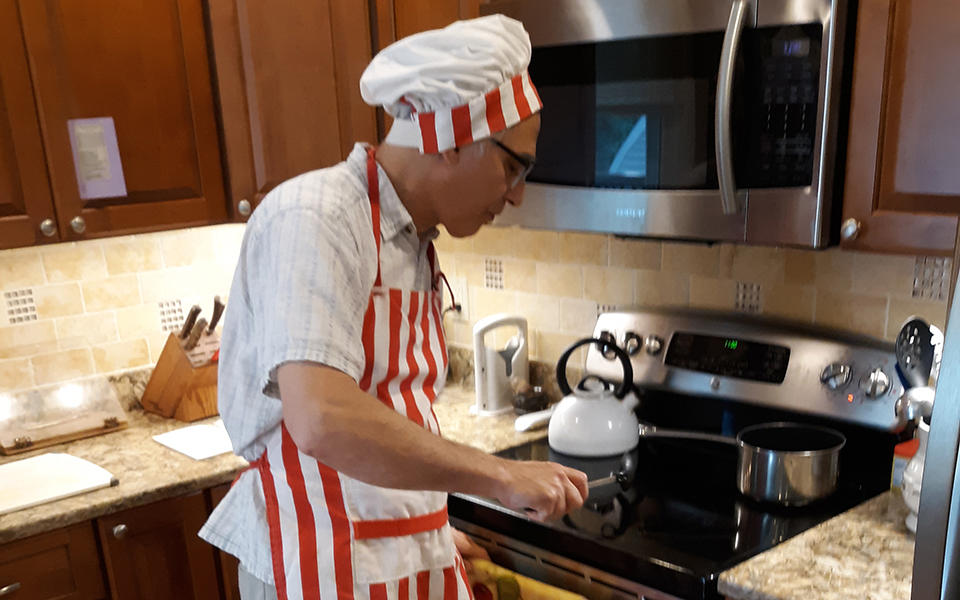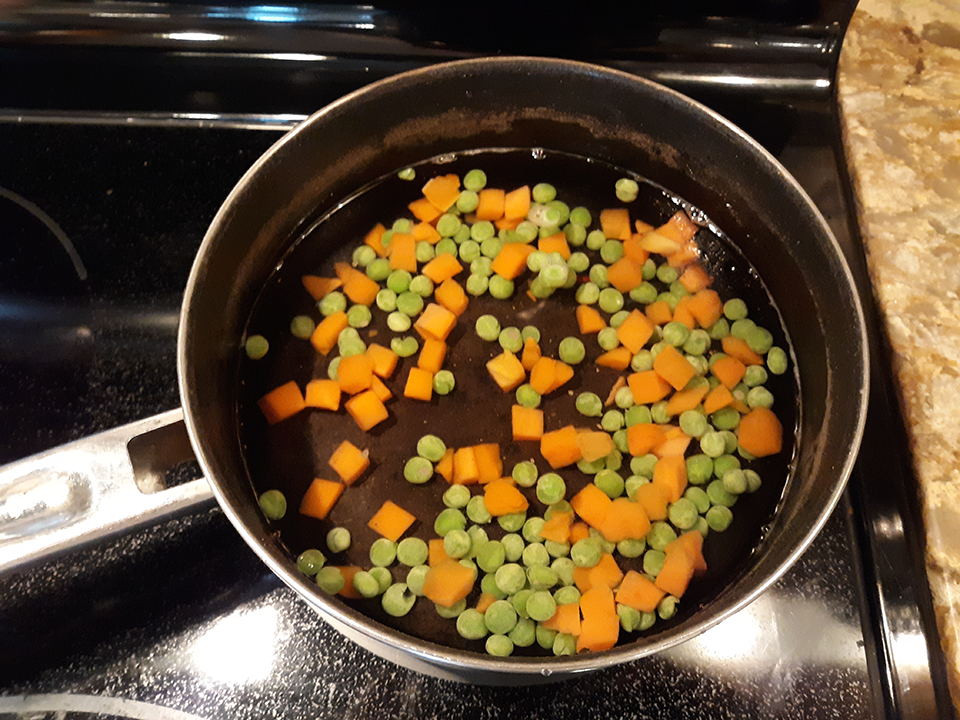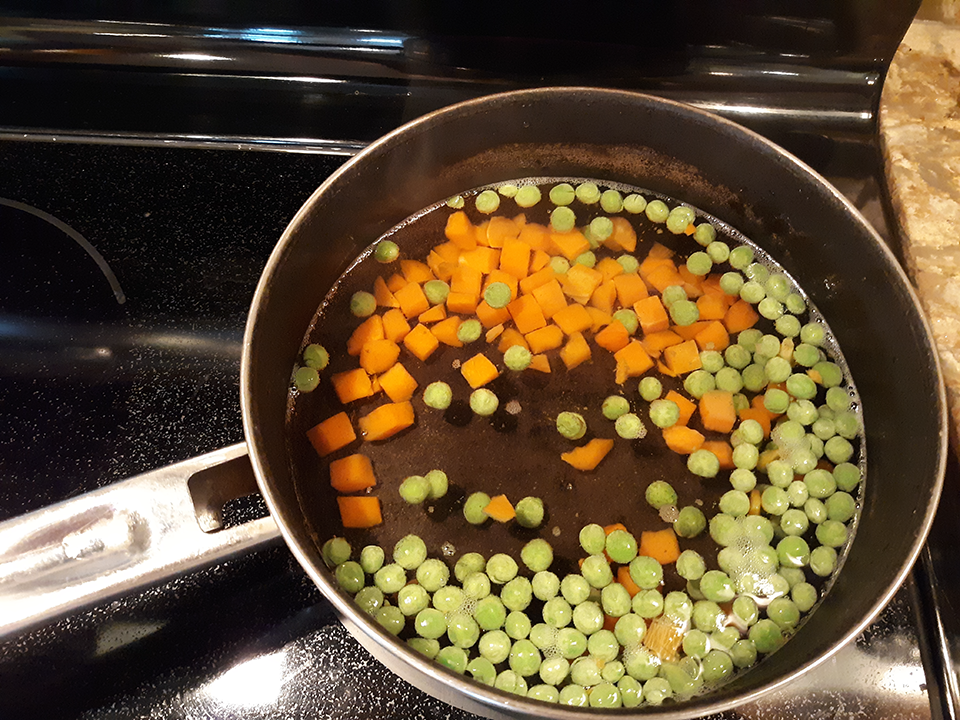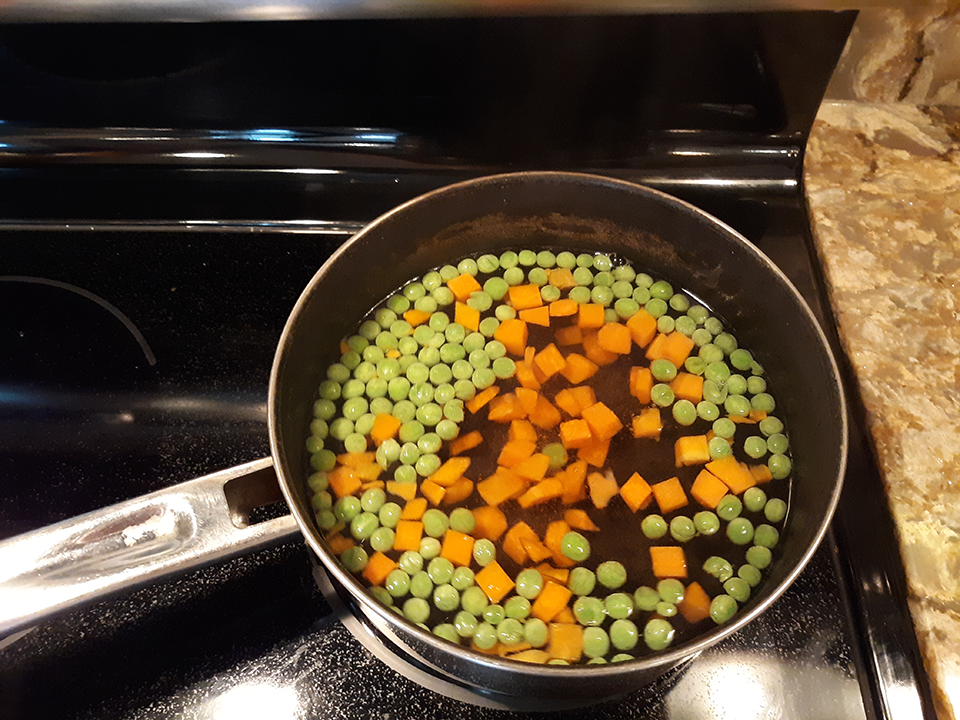Taking Measure
Just a Standard Blog

Zach Levine whipping up some peas and carrots.
NIST physicist Zachary Levine doesn’t cook that often, but when he does it can easily turn into a science experiment.
Two years ago, after he and his wife had endured a week of under-baked cookies and chicken that took forever to roast, Levine wasn’t content to simply recalibrate his oven according to the manufacturer’s directions. In attempting his own calibration, using the boiling point of water as a standard reference, Levine ended up studying the thermal physical properties of water.
More recently, Levine was back in the kitchen, boiling the contents of a frozen package of peas and carrots for dinner, when he noticed something odd: The two vegetables spontaneously parted company, with the peas generally moving to the edges of the pot while the carrots stayed put in the center. Every time Levine stirred the vegetables together — once, twice, three times, four times — they quickly separated, reverting to the same pattern in some 15 seconds.
He had to know why.
For his experiment, Levine placed a frozen mixture of peas and carrots in a 1.5-quart aluminum-bottom pot. Upon heating, the peas and carrots once again separated, although this time the peas floated to one side of the pot while the carrots sank to the bottom of the other side. Later, in the same pot, Levine observed a separation pattern much closer to the one that had originally piqued his curiosity, although the carrots now clumped in a region slightly off-center.
At first Levine thought that the phenomenon might be explained by the tea leaf paradox. In that phenomenon, tea leaves in a stirred teacup migrate to the center and bottom of the cup, even though the stirring would create an outward centrifugal force that would thrust the leaves to the cup’s outskirts. The explanation, as reported by Albert Einstein in 1926, is that the stirring creates a secondary flow, related to friction on the bottom of the teacup. This flow runs counter to and can be stronger than the centrifugal force, keeping the tea leaves centered.
But although that type of secondary flow might account for the distribution of the carrots, and might even be extended to the floating peas, that explanation had a fatal flaw: It required a spoon and did not account for the boiling of the liquid.



Pondering the observations further, Levine hit upon the likely solution — a different type of process, known as Rayleigh-Bénard convection. This kind of convection, or heat-driven flow, describes what happens when a horizontal layer of water is uniformly heated from below by a source such as an oven burner. The peas and carrots, Levine hypothesized, were merely tracers of the water’s motion — an upwelling at the center of the pot, a downward flow at the sides, and an inward, center-directed flow at the bottom. (A similar type of motion occurs in a thunderstorm, which is driven by warm air that rises beneath a cloud of water vapor.) Because the carrots and peas have different densities, the two vegetables track different parts of the flow, which would account for their separation.
Aside from the separation of the vegetables, Levine observed other effects, such as the sinking-to-floating transition of the peas, then the carrots. He also found that the carrots do not move until they become hot enough to become buoyant.
While Levine doesn’t have a definitive physical model, he did perform a statistical test known as a chi-square test, which showed that after boiling, there were far fewer peas or carrots mingling with each other than expected if the two vegetables were randomly mixed. Levine reports great joy in finding a probability, or p-value (get it?), of 0.00001, indicating that the separation of peas and carrots he found was statistically significant rather than a random occurrence.
Studying the dynamics of peas and carrots in boiling water could teach students about an emerging area in physics: non-equilibrium pattern formation. If dissertations on the physics of sandpiles and ponytails and treatises on why Brazil nuts always rise to the top of a shaken can of nuts can be published in such prestigious journals as Physical Review Letters, Levine muses, why not a study of peas and carrots?
About the author
Related Posts
Comments
I don't know about that, but when I was a kid, the Franklin Institute in Philadelphia had a tube of 7 immiscible liquids which, when shaken together, would separate out into a column which looked like a parfait.
My high school physics teacher, Mr Murphy did the same with various alcohols. Mostly Crème de xxx varieties. Really cool.
You have a real ability for writing unique content. I like how you think and the way you represent your views in this article. I agree with your way of thinking. Thank you for sharing.
Great post I must say and thanks for the information. Education is definitely a sticky subject. However, is still among the leading topics of our time. I appreciate your post and look forward to more.
This is also a very good post which I really enjoyed reading. It is not every day that I have the possibility to see something like this.
This peas and carrots article was very interesting. It is wonderful that some people are so curious about things that occur around them that they actually try to figure strange things out. Oh, yeah, they call them geniuses and scientists! I really was delighted with both the content of this article, and the almost understandable explanations. If I knew very much about how science, physics, etc I would have understood more completely. It just so happens, that I too, had begun to wonder about what made carrots and peas dance apart as they cooked. However, my skills are deficient in STEM subjects. This article makes me want to learn more about science! Thank you, for a very well-written article! Mary C. Melchor.
Hi, Mary. Thanks so much for your kind words. We'll pass your comments along to the author.






I wonder if there was any type of experiment where a tank full of several liquid densities was heated and cooled over the surface at various spots?